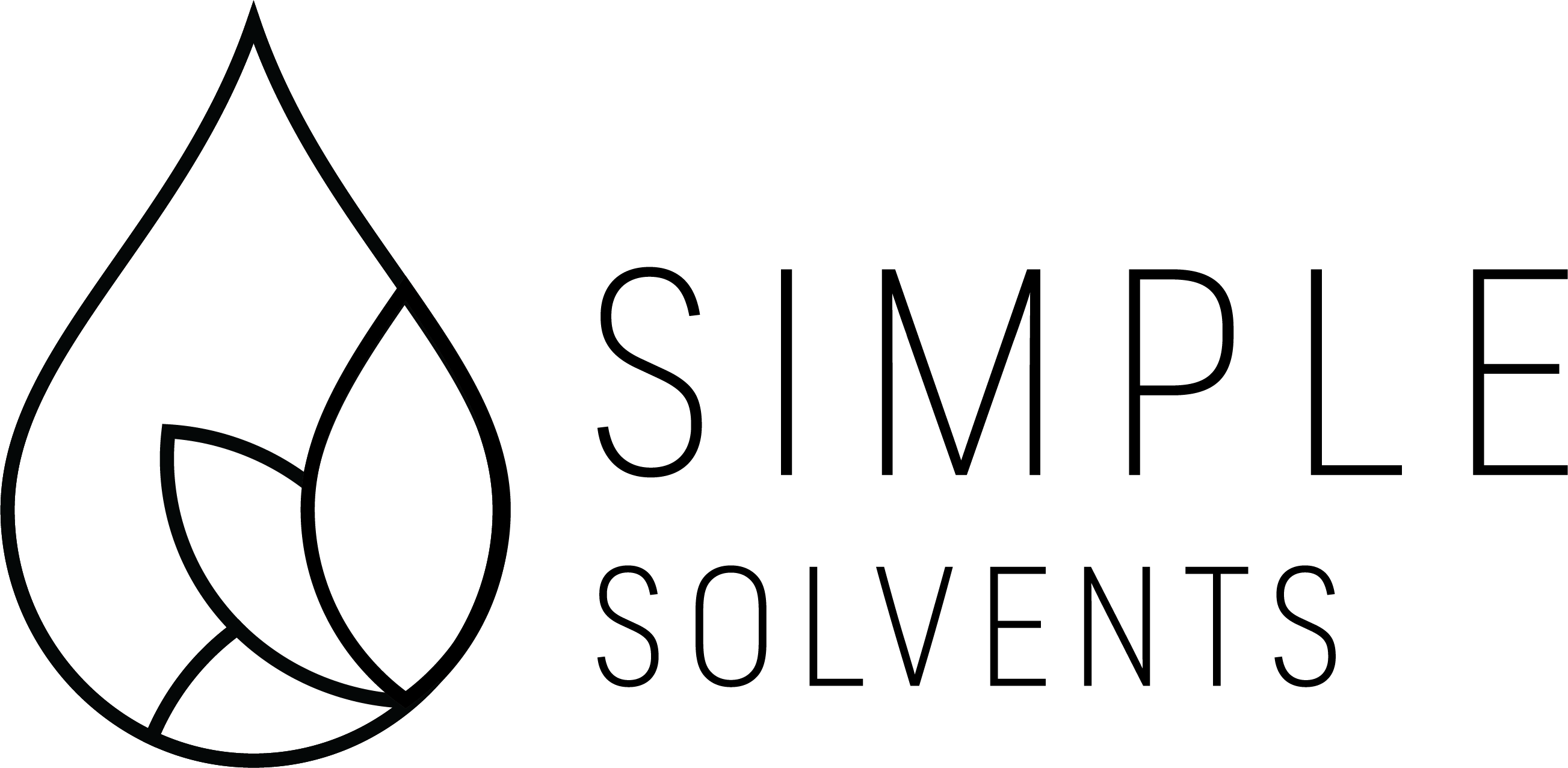Solvent Extraction 101: Techniques, Applications, and Selecting the Right Solvent

Solvent Extraction 101: Techniques, Applications, and Selecting the Right Solvent
Solvent extraction is an essential technique used in various industries, including
pharmaceuticals, cosmetics, food and beverages, and environmental testing. As a beginner,
understanding the fundamental concepts of extraction and the different techniques used can
be overwhelming. However, grasp these fundamentals, and you’ll be able to select the most
effective solvents and methods for your needs confidently.
In this beginner’s guide to extraction, we will introduce the foundations of this powerful
process, exploring various extraction techniques and their respective applications. This
comprehensive guide will also help you understand the role solvents play in extraction and
provide practical guidance on choosing the right solvent for your specific requirements.
We will begin by exploring the fascinating world of solvents, where you will learn about the
different types of solvents, including polar and nonpolar, and discover their unique properties
and functions. Developing a solid understanding of solvents’ chemical properties and
characteristics is an essential step in mastering the art of extraction.
Next, we will delve into the intricacies of extraction techniques, such as liquid-liquid extraction,
solid-phase extraction, and supercritical fluid extraction, providing a detailed overview of each
method’s advantages, disadvantages, and ideal applications. Equipped with this knowledge,
you will be able to identify the most suitable extraction techniques for your needs, ensuring
optimal results.
To further assist you in your journey, we will also cover essential factors to consider when
selecting the right solvent for your extraction process, such as chemical compatibility, solubility,
and cost-effectiveness. By considering these factors and understanding the options available,
you can make an informed decision that will ensure the success of your project.
No beginner’s guide is complete without addressing safety. This guide will raise awareness of
key safety measures that must be taken when working with solvents, ensuring that your
extraction process is not only fruitful but also safe for both you and the environment.
Embarking on your journey into the world of solvent extraction can be a daunting task, but with
the right knowledge and understanding, the possibilities are endless. In this comprehensive
guide, we aim to provide you with the fundamental tools and information necessary to make
your solvent extraction projects a success.
Solvent Extraction 101: Techniques, Applications, and Selecting the Right Solvent
Extraction is an indispensable process used across a variety of industries. This article
will serve as a comprehensive guide, covering the basics of solvent extraction techniques, their
applications, and factors to consider when selecting the right solvent for your project.

Understanding Solvents: Properties and Types
Before diving into specific extraction techniques, it’s essential to understand solvents’ properties
and types. A solvent is a substance that dissolves a solute, resulting in a homogeneous
solution. Solvents are classified into two primary categories:
- Polar solvents: These solvents have a high dielectric constant and can dissolve polar
compounds. Examples include water, alcohols, and ketones. Polar solvents are used in various
applications, such as the extraction of polar compounds like sugars and organic acids. - Nonpolar solvents: With low dielectric constants, nonpolar solvents dissolve nonpolar solutes,
like hydrocarbons. Examples include hexane, ether, and chloroform. These solvents are
typically used for the extraction of nonpolar compounds, such as fats, oils, and aryl compounds.
Understanding the chemical properties of solvents helps in selecting the most appropriate
solvent for a specific extraction process.- Common Solvent Extraction Techniques
Several extraction techniques leverage the power of solvents; the most common methods will
be discussed below.
- Common Solvent Extraction Techniques
- Liquid-Liquid Extraction (LLE): Also known as extraction or partitioning, LLE separates
compounds based on their relative solubility in two immiscible liquid phases. One phase
typically contains the compound of interest dissolved in the solvent, while the other phase
contains the impurities. LLE is widely used in the pharmaceutical industry, wastewater
treatment, and the purification of bioactive compounds. - Solid-Phase Extraction (SPE): In SPE, the sample is passed through a solid sorbent material
that selectively retains the desired compounds while allowing undesired compounds to pass
through. This extraction method is popular for the pre-concentration of trace analytes in
environmental, food, and biological samples. - Supercritical Fluid Extraction (SFE): With SFE, a supercritical fluid (usually carbon dioxide)
acts as the extraction solvent. Under specific temperature and pressure conditions, the fluid
possesses unique properties that make it ideal for dissolving various compounds. SFE is
commonly used in pharmaceuticals, cosmetics, and food industries.
Applications of Solvent Extraction Techniques
Different solvent extraction techniques are applicable across diverse industries. Some examples
include: - Pharmaceuticals: The extraction of bioactive compounds from plant materials and the
purification of drugs from natural sources often rely on solvent extraction techniques. Solvent
extraction is also employed in drug quality control and the development of new drug
formulations. - Cosmetics: Essential oils, fragrances, and flavors are frequently extracted from various plants
and substances using extraction methods, such as steam distillation or SFE. - Food and Beverages: Extraction methods are widely used to extract flavors, natural
colors, and nutraceuticals from raw materials. Additionally, the extraction of edible oil and the
decaffeination of coffee and tea often involve these techniques. - Environmental Testing: Solvent extraction techniques, such as LLE and SPE, are commonly
used to isolate and concentrate pollutants or contaminants in environmental samples, including
water, air, and soil.- Choosing the Right Solvent: Factors to Consider
Selecting the most suitable solvent for your extraction process is crucial for optimal results.
Consider the following factors when making your choice:
- Choosing the Right Solvent: Factors to Consider
- Solvency: Ideally, the solvent should dissolve the target compound(s) effectively while leaving
the undesired compounds behind. Considering the polarity of solvents and solutes is crucial in
this aspect. - Safety: Safety must be factored into the decision-making process. Some solvents are toxic,
flammable, or even potentially hazardous to the environment. Choose a solvent with a low
toxicity level, and always follow proper safety guidelines when handling solvents. - Availability and Cost: The cost of solvents varies widely. Opt for a solvent that is both readily
available and economically viable for your project. - Boiling Point and Volatility: A solvent’s boiling point affects the extraction process as well as
the ease of solvent removal after extraction. Choosing a solvent with an appropriate boiling
point is essential, as it can impact the extraction efficiency and post-extraction processing steps. - Compatibility: Ensure the solvents you choose are chemically compatible with the materials
and equipment used in the extraction process.
Conclusion
Understanding the basics of solvent extraction, including different techniques and their
applications, is essential for success in various industries, from pharmaceuticals to
environmental testing. Moreover, selecting the right solvent can significantly impact the
efficiency of the extraction process and the quality of the final product.
Looking for the purest and highest quality pharmaceutical-grade solvents for your industrial or
home extraction needs? Look no further than Simple Solvents! Our products are rigorously
tested for purity and quality, ensuring that you get the best results every time. Plus, explore our
selection of solvents for even more options to suit your unique needs.
